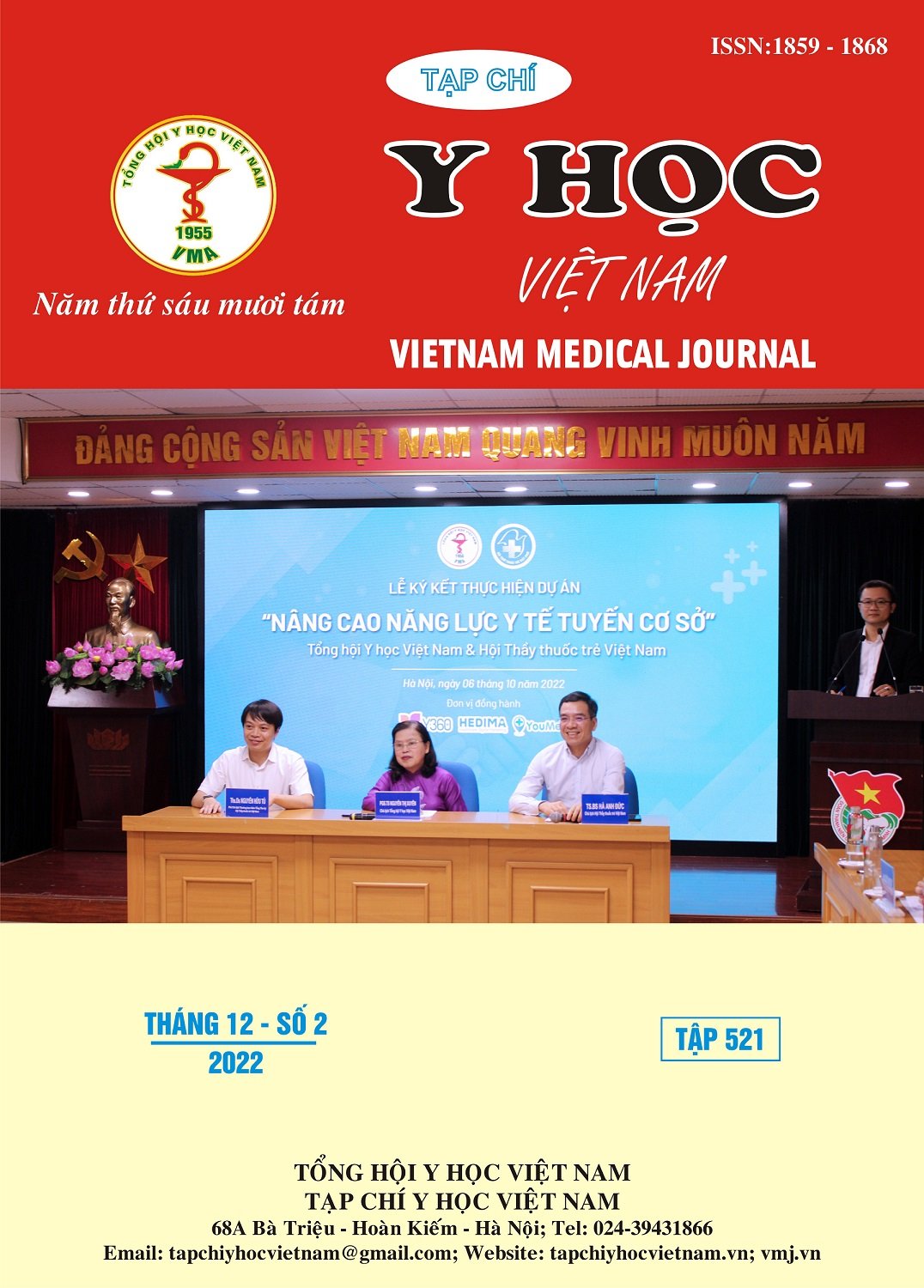A STUDY ON CLINICAL, SUBCLINICAL CHARACTERISTICS AND SHORT-TERM RESULTS OF SHORT DUAL ANTIPLATELET THERAPY IN PATIENTS AT HIGH BLEEDING RISK UNDERGOING POLYMER-FREE DRUG-COATED CORONARY STENTS WITH CHRONIC CORONARY DISEASE
Main Article Content
Abstract
Background: Percutaneous coronary intervention (PCI) by catheter is incresingly popular and confirms its absolute role on the treatment of chronic coronary artery disease. Polymer-free drug-coated coronary stents not only minimize the duration of DAPT but also have a high resistance to restenosis during intervention. Objectives: To evalate the short-term results of short DAPT and identify the associated factors in patients at high bleeding risk. Materials and method: We performed the prospective and cross-sectional study on 78 patients at high bleeding risk with chronic coronary artery disease at An Giang Center General Hospital. Results: The mean of age of the study subjects was 67,8±12,01. Clinical symptoms after intervention (NYHA, CCS) were clearly improved. The rate of adverse events after the follow-up of DAPT in patients at high bleeding risk was 17,9%, of which 50% had major bleeding risk requiring hospitalization. Female gender, age ≥75, Hb<10g/dL, BMI ≥23 were associated with adverse events. Conclusion: In patients at high bleeding risk requiring a shortened duration of DAPT, BioFreedom polymer-free drug-coated stents are safe and effective in chronic coronary intervention.
Article Details
Keywords
Polymer-free drug-coated stent, coronary artery, percutaneous coronary intervention, short dapt, Biofreedom
References
2. Nguyễn Mạnh Quân (2021), Đánh giá kết quả can thiệp bằng stent phủ thuốc không Polymer – BioFreedom ở bệnh nhân động mạch vành, Luận án Tiến sĩ Y học, Trường Đại học Y Hà Nội.
3. Philippe Garot et al (2017), “2-Year Outcomes of High Bleeding Risk Patients After Polymer-Free Drugs-Coated Stents”, Journal of the American College of Cardiology, 69(2), pp. 162-171.
4. Philip Urban et al (2015), “Polymer-free Drug-Coated Coronary Stents in Patients at High Bleeding Risk”, The New England Journal of Medicine, pp. 1-10.
5. Roxana Mehran (2021), “3- or 1-Month DAPT in Patients at High Bleeding Risk Undergoing Everolimus-Eluting Stent Implantation”, Cardiovascular Interventions, 14(17), pp. 1870-1883.
6. Grigoris Chatzantonis (2020), “Real-world analysis of a Biolimus A9 polymer-free drug-coated stent with very short dual antiplatelet therapy in patients at high bleeding risk”, Herz, pp. 1-8.
7. Ron Waksman et al (2017), “Polymer-free Biolimus A9-coated stents in the treatment of de novo coronary lesions with short DAPT: 9-month angiographic and clinical follow-up of the prospective, multicenter BioFreedom USA clinical trial”, Cardiovascular Revascularization Medicine, 18(7), pp. 475-481.
8. Juhani Knuuti, William Wijins, Antti Saraste et al (2020), “2019 ESC Guidelines for diagnostic and management of chronic coronary syndromes: The Task Force for diagnosis and management of chronic coronary syndromes of the European Society of Cardiology”, European Heart Journal, 41(3), pp. 407-477.
9. Roxana Mehran, Sunil V. Raoo, Deepak L. Bhatt et al (2011), “Standardized Bleeding Definitions for Cardiovascular Clinical Trials”, Circulation, 123, pp. 2736-2747.


